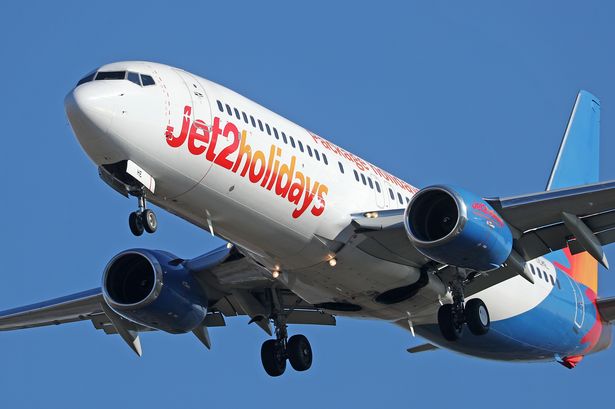On a seemingly ordinary day, a Jet2 flight en route to Rome, Italy, from Scotland encountered an unforeseen emergency, transforming a routine journey into a tense race against time. Shortly after takeoff, the aircraft transmitted a 7700 squawk alert, a universal signal indicating an emergency onboard, immediately capturing the attention of air traffic control and triggering a swift response. While the specific nature of the emergency remained undisclosed initially, the urgency of the situation was palpable as the flight was forced to divert from its intended course, leaving passengers and those on the ground anxiously awaiting updates. This incident serves as a stark reminder of the inherent unpredictability of air travel and the critical importance of robust safety protocols and the rapid response capabilities of aviation authorities.
The 7700 squawk code, etched into the lexicon of aviation professionals, serves as a crucial communication tool in emergency situations. This distinct electronic signal, transmitted from the aircraft’s transponder, immediately alerts air traffic controllers to the presence of an emergency on board, allowing them to prioritize the affected aircraft and provide essential assistance. The 7700 code doesn’t specify the nature of the emergency, which could range from a minor technical malfunction to a more serious issue requiring immediate intervention. However, it acts as a beacon, cutting through the constant chatter of air traffic communications and demanding immediate attention. This rapid notification allows air traffic controllers to quickly assess the situation, clear surrounding airspace, and coordinate emergency services on the ground, significantly enhancing the chances of a safe outcome. The use of the 7700 code underscores the importance of standardized communication protocols in aviation, facilitating swift and coordinated responses to unexpected events.
The decision to divert a flight, especially one already airborne, is never taken lightly. It represents a complex calculation balancing the immediate safety concerns of those on board against the logistical challenges of altering a flight plan mid-air. In emergency situations like the one experienced by the Jet2 flight, the pilot, in consultation with air traffic control, must rapidly assess the severity of the situation and determine the most appropriate course of action. Factors such as the nature of the emergency, the aircraft’s remaining fuel, the proximity of suitable diversion airports, and the availability of emergency services on the ground all play a crucial role in this critical decision-making process. Diverting a flight can have cascading effects, impacting other flights, airport operations, and passenger itineraries. However, the paramount concern remains the safety and well-being of everyone on board, making the decision to divert, while disruptive, often the most prudent course of action.
The incident involving the Jet2 flight highlights the multifaceted nature of in-flight emergencies and the intricate web of procedures designed to manage them effectively. From the moment the 7700 squawk alert was transmitted, a carefully orchestrated sequence of events unfolded, involving close coordination between the flight crew, air traffic control, airport authorities, and emergency services. The pilot’s primary responsibility is to maintain control of the aircraft and execute the necessary procedures to address the emergency, relying on their training and experience to navigate the unexpected. Simultaneously, air traffic controllers work diligently to clear the airspace around the affected aircraft, ensuring a safe path to the designated diversion airport. On the ground, airport authorities prepare for the arrival of the diverted flight, coordinating emergency services and ensuring the necessary resources are in place to assist passengers upon landing.
While the specific details of the Jet2 flight emergency remain undisclosed, the incident underscores the importance of rigorous safety regulations and comprehensive training within the aviation industry. Pilots undergo extensive training to handle a wide range of emergency scenarios, equipping them with the skills and knowledge to make critical decisions under pressure. Aircraft maintenance protocols are meticulously designed to minimize the risk of technical malfunctions, while air traffic control systems are constantly evolving to enhance safety and efficiency in increasingly congested airspace. The aviation industry’s unwavering commitment to safety is reflected in the constant refinement of regulations, the ongoing development of advanced technologies, and the relentless pursuit of improved training programs. This incident serves as a testament to the importance of these efforts in mitigating the risks inherent in air travel.
The diversion of the Jet2 flight, despite the anxiety it undoubtedly caused, ultimately demonstrates the resilience of the aviation system and its capacity to respond effectively to unforeseen challenges. While the disruption to passengers’ travel plans is regrettable, the successful diversion and safe landing highlight the effectiveness of the established safety protocols. The incident also serves as a valuable learning opportunity, allowing aviation authorities to analyze the events, identify potential areas for improvement, and further enhance the safety and resilience of air travel. This commitment to continuous improvement is a hallmark of the aviation industry, ensuring that lessons learned from each incident contribute to a safer and more reliable flying experience for everyone.














